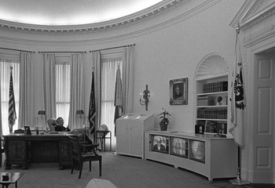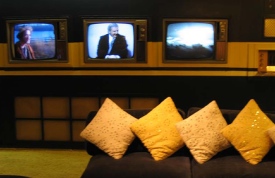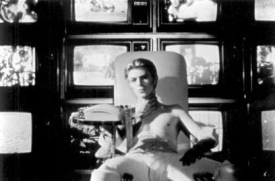There are some recordings by Bob Dylan that I’ve played over and over again. Each time I play them they’re exactly the same. The quality of the sound differs, but the intention is that a recording offers an identical experience. I’ve listened to “Don’t Think Twice, It’s Alright” so many times I’m able to reproduce a facsimile of it in my mind at will.
This morning during my Sunday morning trip to the newsstand, I picked up a copy of UNCUT magazine with Bob Dylan on the cover. I was interested in reading about the latest release in the Bootleg Series called “Tell Tale Signs.” There’s a quote at the top of the article that goes like this:
“Have I ever played any song
twice exactly the same?”“No, Bob, No”
“See? I don’t do that.”
So while I have a fixed idea of what a particular Dylan song sounds like, Dylan doesn’t think of his songs– or any songs as working that way. He never takes the play out of playing a song. I read somewhere that he never listens to his recordings; the song he carries with him is way on down the road from that day it was mixed down to a master.
In a world of scarcity– there’s only room for one version of a song- the one that will make the record company money. That’s the old model. In a world of abundance, each time we revisit a song, it’s never the same. The trap of the digital is that it only makes identical copies. The freeing potential of the digital is that every version of every page of Wikipedia is available. We now have an economic framework that can support releasing every version. Buy a single instance, or access to all versions– access to the version control system.
This set of ideas can’t be contained in one area of culture or commerce.
Doc Searls writes about the new way that writing is produced:
Traditional journalism is static. Its basic units are the article, the story, the piece. The new journalism is live. It doesn’t have a basic unit any more than a river or a storm have a basic unit. It’s process, not product. Even these things we call posts, texts, tweets and wikis are less unitary than contributory. They add to a flow, which in turn adds to what we know.
Steve Gillmor writes about the way the companies communicate, through official static planned releases of information or with live conversations through the Network.
Real work gets done in these conversations, and typically this work is being performed in the “open�? because the participants realize (and have been given “permission�? to work at this live level) that they have little to fear from competition because their access to participation trumps others who by definition have to react after the fact. Not only has the value moved on to the next set of conversations, but the product of this work is now being marketed to the audience most likely to buy it.
In both culture and commerce we’re looking for permission to go live, to sing the song a different way every time. But we also need to hear the song differently every time and start a conversation about it. Now, not everyone will want to go down that road. When faced with Bob Dylan in concert, some will be angered by a song sung in a new way. And when we get to that crossroads— most likely you’ll go your way, and I’ll go mine.
3 Comments



